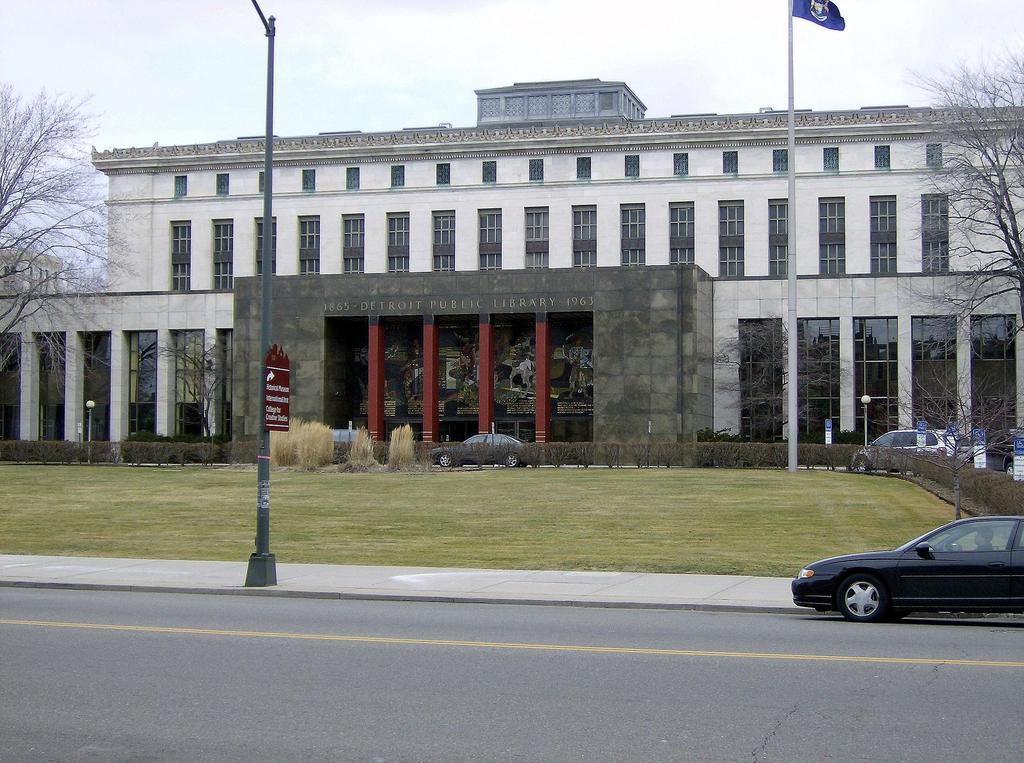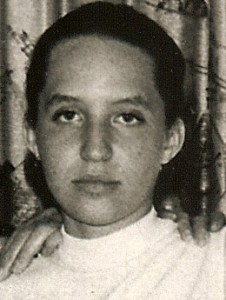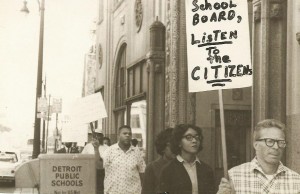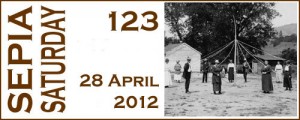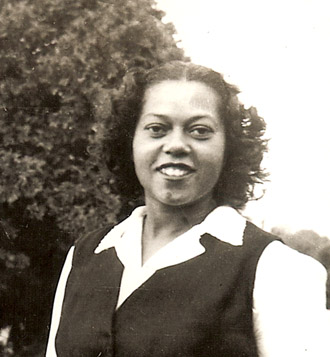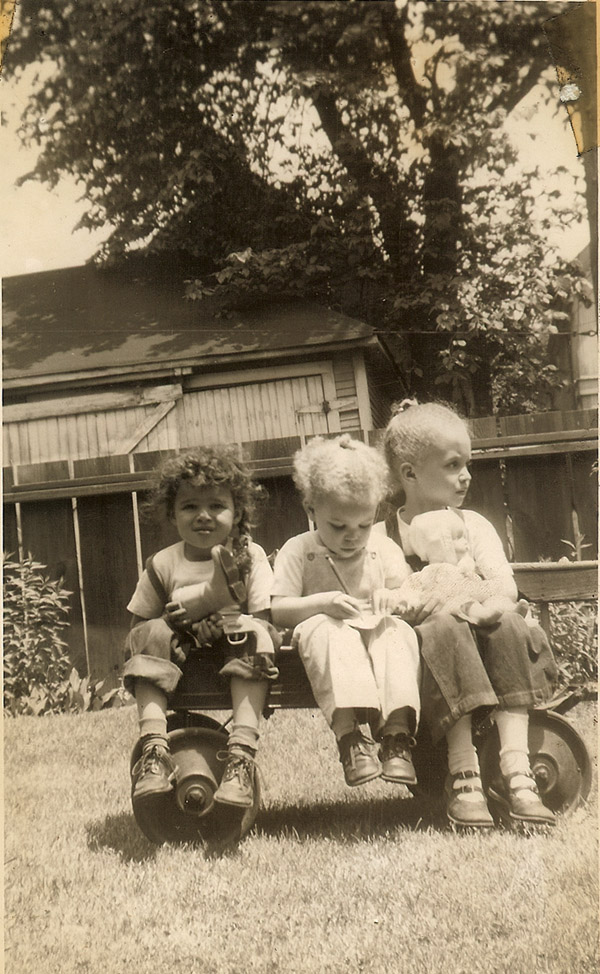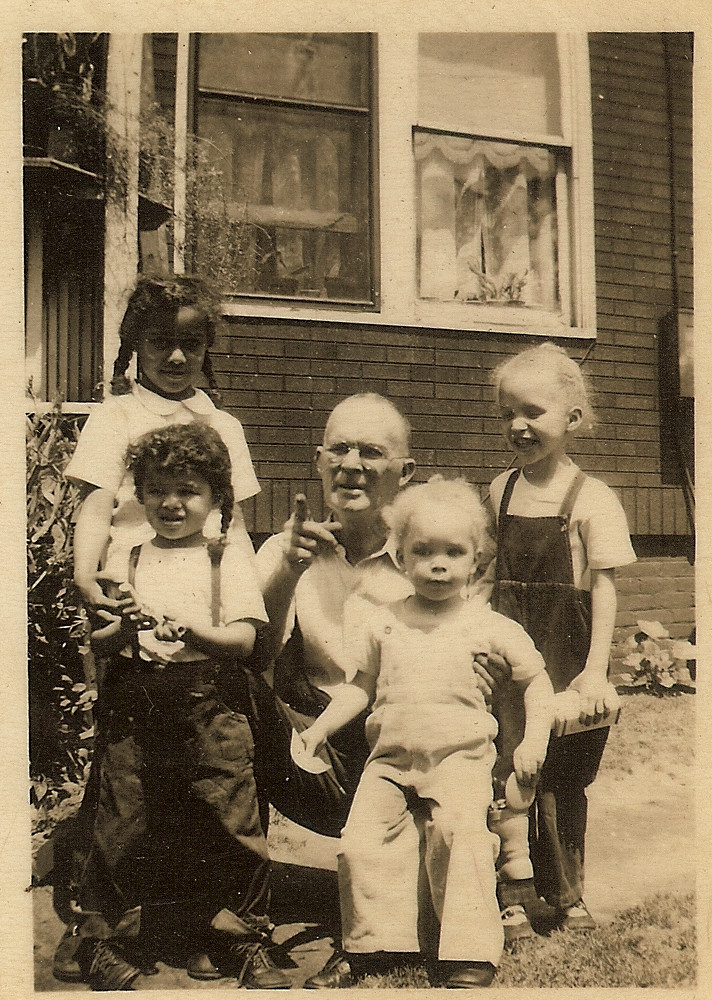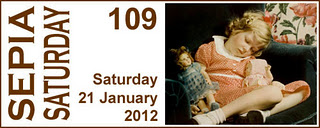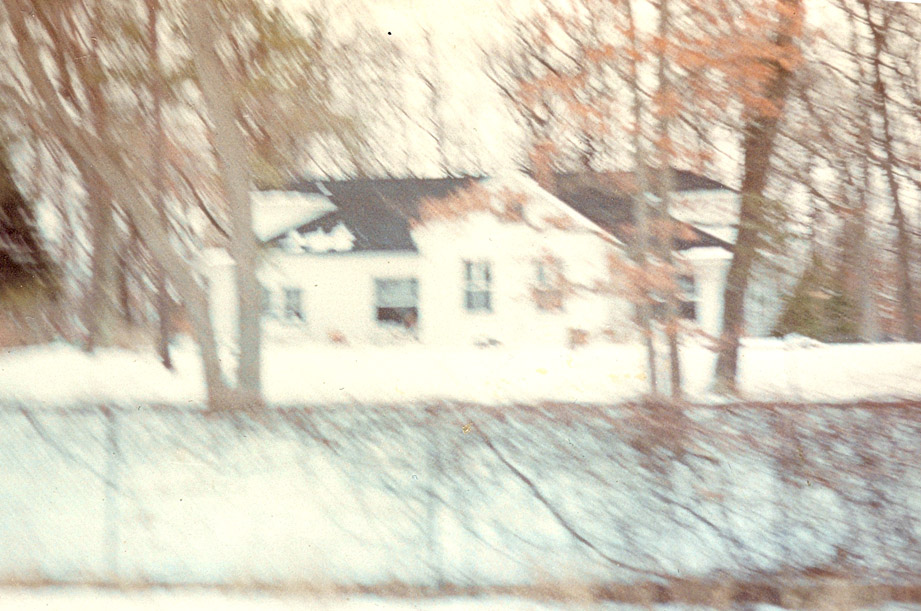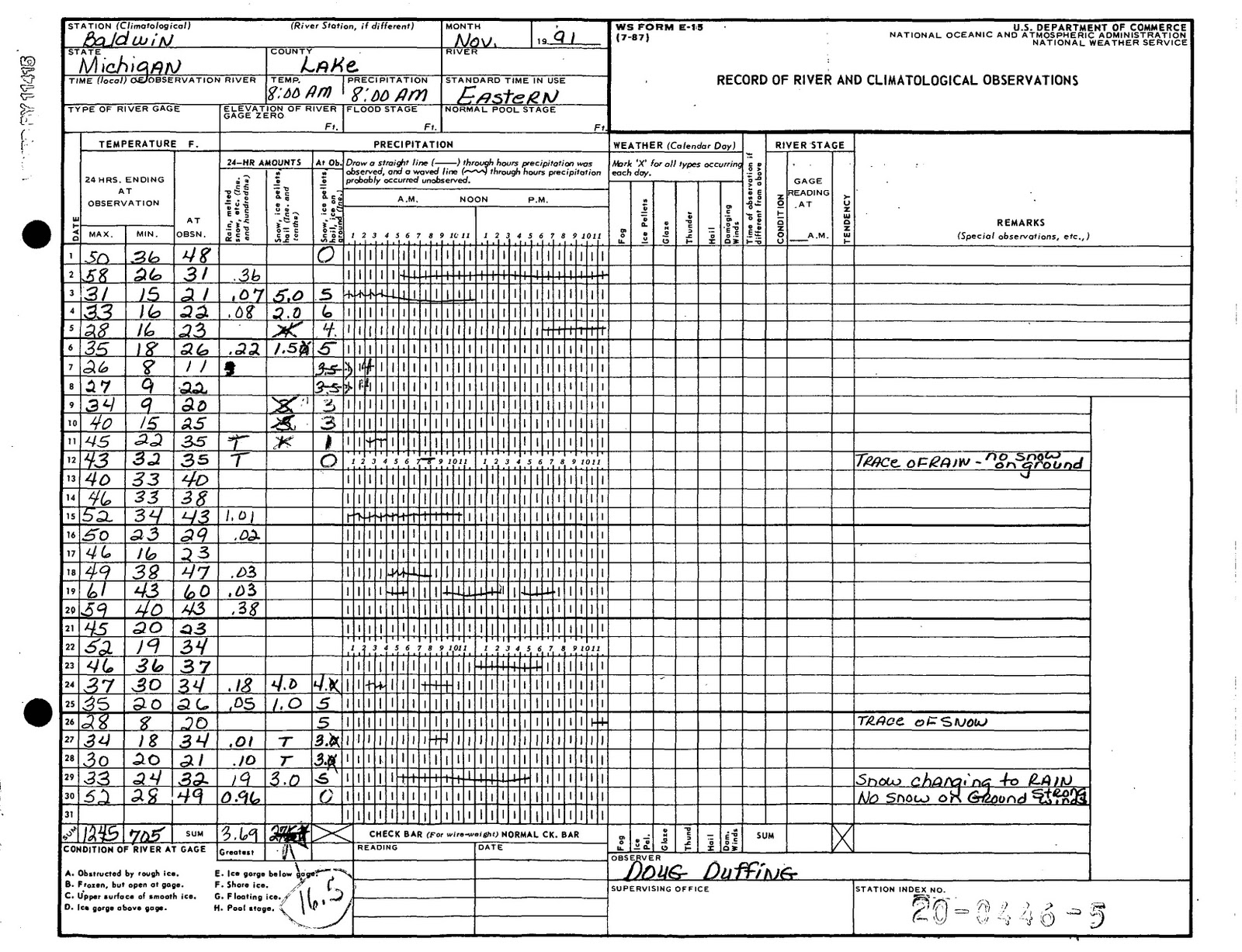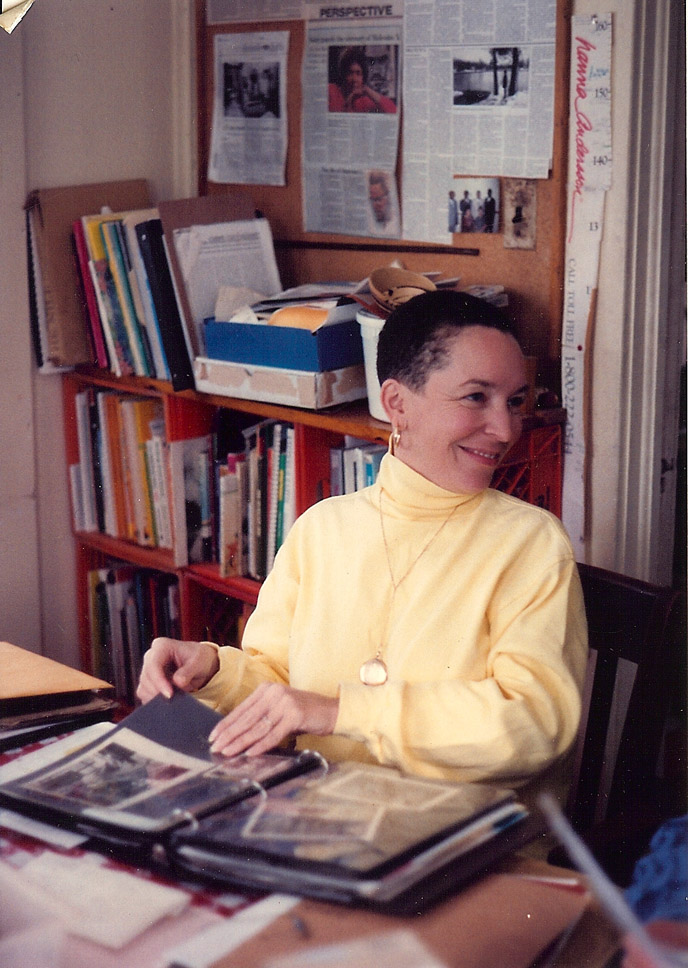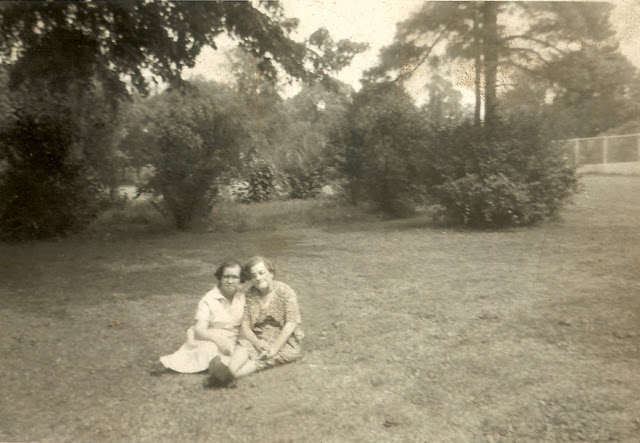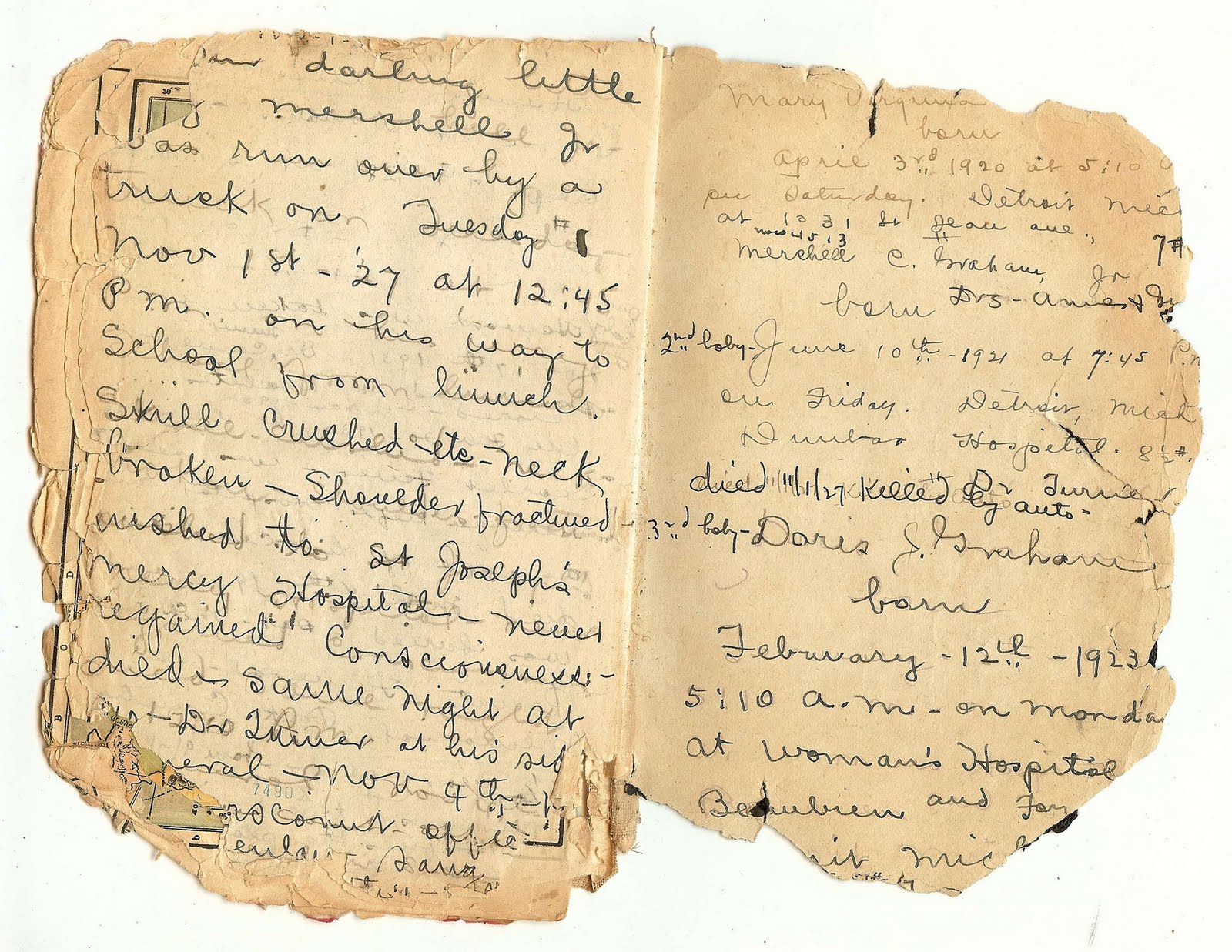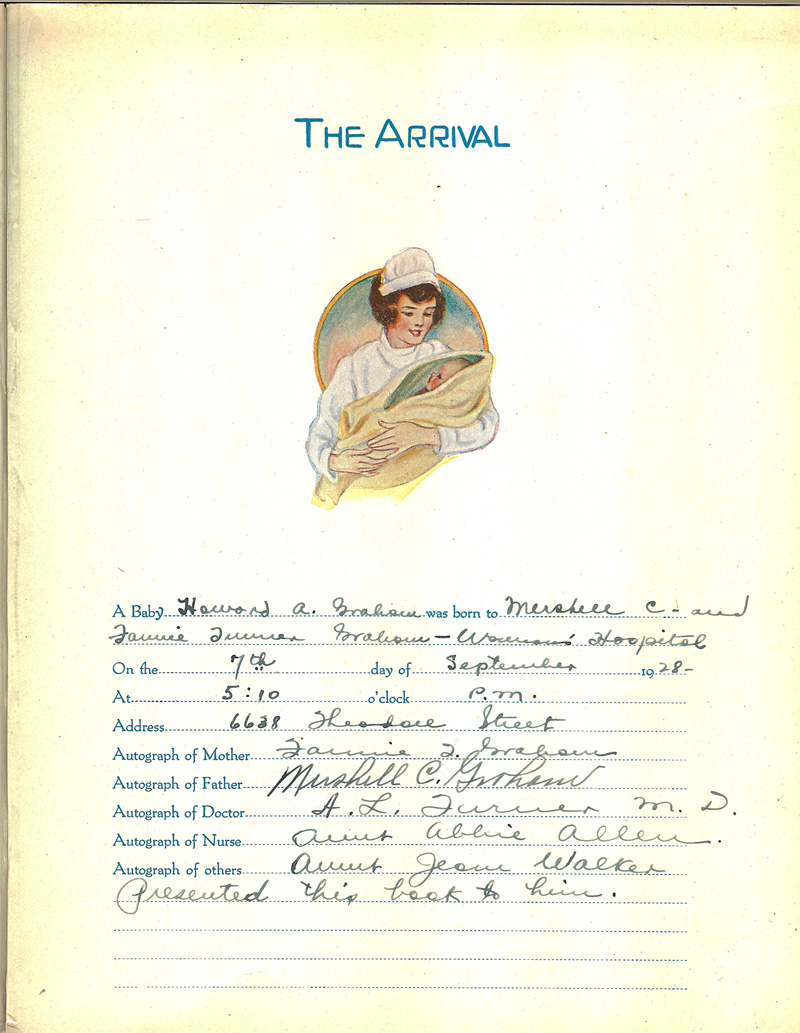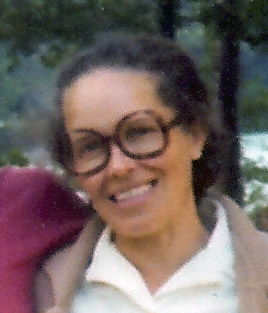Both the Olympic swimming events and the insane hoopla about Champion Gabby Douglas’ hair took me back to my own swimming experience. I first joined the Swim Club as a freshman so that I could spend more time swimming. I took a regular swim class every semester and we swam everyday, except Friday, when we went across the street to the Lucky Strike Bowling Alley and bowled so that the regular gym class could use the pool. We also stayed after school for an hour doing more focused swimming. I didn’t enjoy competing, but I did like swimming so I stayed after the club became a team. I usually swam only in the relay but sometimes all the best swimmers would be ineligible due to bad grades and I would have to swim in a race. One time I came in second place. There were only two in that race. There was one girl in my class who made negative comments about my hair during the three and a half years I swam. I wish that I had known more ways to wear my natural hair instead of just pulled back in a little bun, which she kept telling me, looked like a shredded wheat biscuit. During my senior year our regular coach left to have a baby and the new coach turned the team into a synchronized swimming club. I didn’t much like her and I did not like synchronized swimming at all, so for that last semester of high school, I did no swimming.
Category Archives: memories
I Met My Husband in the Library – April 25, 1966
In late April of 1966 I was 19 and a sophomore at Wayne State University in Detroit. Northern High students walked out of school on April 25 to protest the way they were being (or not being) educated. Several other inner city high schools walked out in sympathy. Northwestern organized a supporting boycott and my sister, Pearl, was a leader. My father and others were providing adult support.
I usually studied in the sociology room of the Main Library, which was in the middle of Wayne’s campus. As I was leaving to go to my next class that day, a guy came up and asked if I was Rev. Cleage’s daughter. I said I was. He asked if I was leading the Northwestern boycott and I said no, that was my sister. We made arrangements to meet after my class on the picket line in front of the Board of Education Building.
We did and afterwards sat around for several hours talking in the “corner” in the cafeteria at Mackenzie Hall. The “corner” was where black students congregated. I felt strangely comfortable with Jim. Strange for me, anyway, since I didn’t feel comfortable with anybody, unless I was in a political discussion. He tried to convince me to join a sorority and convert the members to revolution. There wasn’t a chance I was going to do that. He also told me that he was “nice”. I asked if he meant as in some people were “revolutionaries”, he was “nice”. He said yes, that’s what he meant.
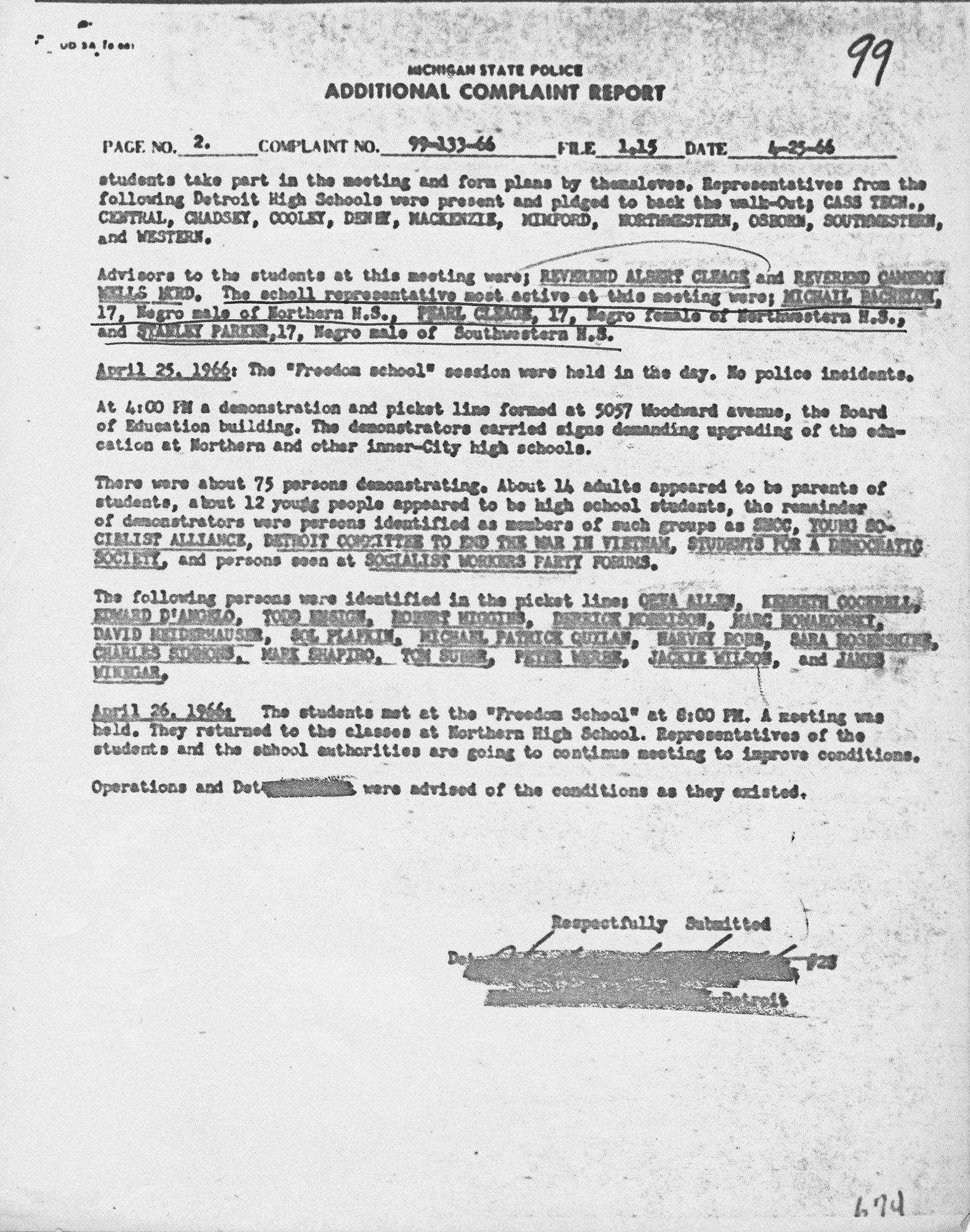
Michigan State Police
Additional Complaint Report
Page No. 2 Complaint 99-133-66 file 1.15 Date 4-25-66
(note: seems to be continued from a lost page)…students take part in the meeting and form plans by themselves. Representatives from the following Detroit High Schools were present and pledged to back the walk-out, Cass Tech, Central, Chadsey, Cooley, Denby, Mackienzie, Mumford, Northwestern, Southeastern and Western.
Advisers to the students at this meeting were; Reverend Albert Cleage and Reverend Cameron Wells MED. The school representatives most active at this meeting were; Micheal Bach____, 17, Negro male of Northern HS, Pearl Cleage, 17, Negro female of Northwestern HS and Stanley Parker, 17, Negro male of Southwestern HS.
April 25, 1966: The “Freedom School” session (sic) were held in the day. No police incidents.
At 4:oo PM a demonstration and picket line formed at 5057 Woodward Avenue, the Board of Education building. The demonstrators carried signs demanding upgrading of the education at Northern and other inner-city high schools.
There were about 75 persons demonstrating. About 14 adults appeared to be parents of students, about 12 young people appeared to be high school students, the remainder of demonstrators were persons identified as members of such groups as SNCC, Young Socialist Alliance, Detroit Committee to end the War in Vietnam, Students for a Democratic Society and persons seen at Socialist Workers Party Forums.
The following persons were identified in the picket lines: _____ Allen, Kenneth Cockerel, Edward D’Angelo, Todd Ensign, Robert Higgins, Derrick Morrison, Marc ____, David Neiderhauser, Sol Plafkin, Micheal Patrick Quinlin, Harvey Roes, Sarah Rosenshine, Charles Simmons, Mark Shapiro, Tom____, Peter_______, Jackie Wilson and James Winegar.
April 26, 1966: The students met at the “Freedom School” at 8:00 PM a meeting was held. They returned to the classes at Northern High School. Representatives of the students and the school authorities are going to continue meeting to improve conditions.
__________FAST FORWARD TO APRIL 26, 2012_________
Today, April 26, 2012, I received this email from a community organizer in Detroit about a student walkout yesterday.
“Today, 180 students were suspended for walking out of Western HS yesterday. Their cell phones were taken from them and messages and numbers were gone through by security. The police deleted numbers and messages from the students’ phones.
This month, Frederick Douglass Academy students walked out over constant turnover of teachers and shortage of supplies. The principal being fired was the catalyst in this student lead walk out. The secretary of the school was ultimately fired, as well.
Mumford HS students walked out, refusing to have Mumford put into the Educational Achievement Authority (failing district). The students were suspended and the teacher who told them they are not failures was fired for allegedly encouraging them to walk out.“
To read more about the present walkout on huffpost go to Detroit Student Walkout.
To visit a website with information by the involved students about the freedom school that starts today (Friday, April 27) and more, click Southwest Detroit Freedom School. The article is on the left side and there are more links at the bottom of the article. I’m cheered to find organizing going on in response to what happened. Almost makes me wish I was in Detroit.
There is no May Pole in this post but there are a couple of Demonstrations that I think will represent May Day.
The Battle of Athens, Tennessee – 1946
In 1946 there was a pitched battle between the corrupt local government and WW2 veterans in Athens, Tennessee. My paternal grandfather was from Athens and I had cousins living there. My cousin, Beatrice Cleage Johnson, wrote a description of that night. It is pretty much the same story as told in the video except that the man shot in the back in the video is white and in the memoir he is black. The video is embedded after Beatrice’s memory of the event.
______________________
I will never forget the day this occurred. The G.I.s had returned to McMinn County and were faced with the same political machine they had left and were determined to do something about it to rid McMinn County of machine politics.
Paul Cantrell was sheriff at this time and he loved two things: money and power. He ruled McMinn County with an iron hand. He was tied to the “Crump Machine,” which was the political boss of the State of Tennessee during the 30’s and 40’s.
Cantrell used deputies who had served prison terms for gambling and bootlegging.
Election day (August 1, 1946) in Athens was a war of “ballots and bullets.” We lived only a few blocks from the jail, where the votes were counted. There were around nine thousand residents in Athens. Of these, seven hundred Negroes played a small part in the election, but they formed a balance of power. Most of the Negroes were Republican and received threats and repeated arrests from the Democrats. The election of the sheriff was very important in McMinn County. The Republicans tried to unseat the Democrats. The pressure of a world war and the return of veterans from World War II had great influence on the politics of the county.
Election day in Athens was like an armed camp. When voters came to the polls, the Cantrell Machine was staging demonstrations, strutting around with pistols and black jacks. Deputy Sheriff Pat Mansfield, used thugs from other states as deputies. The voting was heavy at the polls. The GI’s were “poll watchers.”
Trouble started at the polls when Tom Gillespie, an elderly Negro, tried to vote and was slugged by the deputies. He was shot in the back by another and was taken to the hospital. G.I. poll watchers were held prisoners at the polls. No one in Athens slept that night.
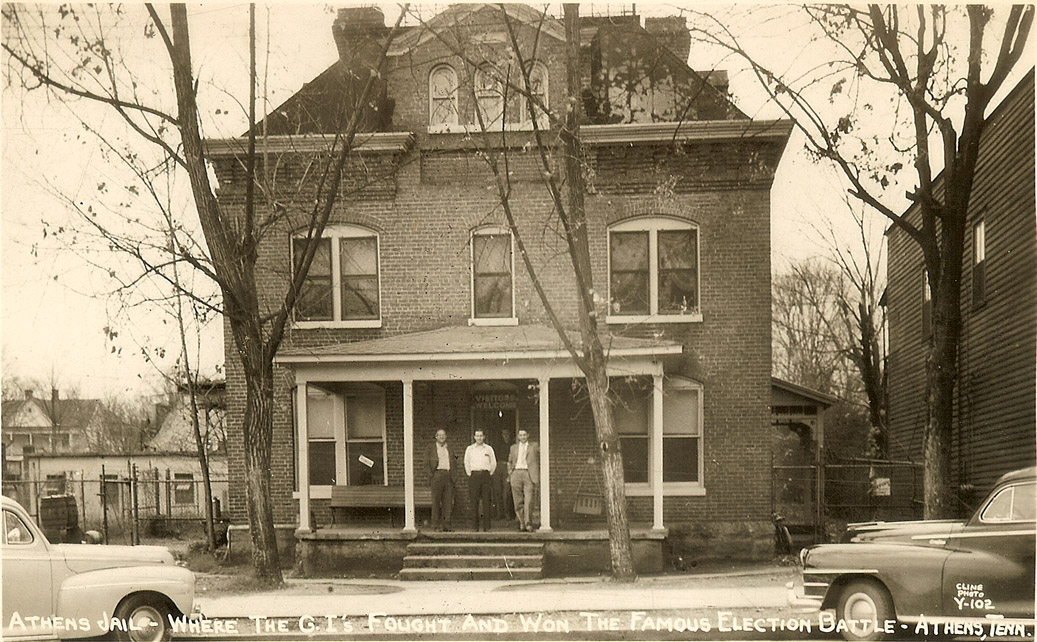
The votes were being counted at the McMinn County Jail. The G.I.’s stood at the door of the jail and demanded the ballot boxes and the release of the G.I. prisoners.
The battle had begun. The G.I.’s blasted the jail with dynamite and bullets. The deputies were safe behind the walls of the solid brick jail. Cars were dynamited, turned over and filled with bullets. Picks and axes were also used to destroy cars.
The deputies finally surrendered at 3:30 in the morning with their hands up. Both Paul Cantrell and Pat Mansfield were able to escape from the jail, leaving their deputies behind to face an angry mob.
McMinn County was without law and order from the night of the election until the afternoon of the next day. I remember seeing men walking the streets with shotguns and rifles. I will never forget the morning after when everybody went to town to see the ruins. After this battle, the county soon settled down to ordinary life. Freedom of speech and the right to vote their way was given back to the people, but August 1, 1946, will never be forgotten.
McMinn County became a Republican county; however, Democrats also held offices in both the county and city and still do.
—Beatrice Cleage Johnson
Three in a Wagon 1951
On the back of the photograph my grandmother, Fannie (aka Nanny), wrote “Barbara Lynne 3, Pearl Michelle 2, Kristin Graham 4. May 30 – 1951. This was snapped by DeeDee.”
This photo was taken in my grandparents backyard. We spent most Saturdays back then at Nanny’s and Poppy’s playing with our cousins. On the left end of the wagon is my cousin Barbara holding a cowboy boot and a toy gun. In the middle is my sister Pearl who is writing madly. I am on the right end holding a doll and looking worried. My sister grew up to be a writer. I grew up to have 6 children. If only cousin Barbara had grown up to ride bucking broncos or live on a ranch or rob banks, the mirroring of the future would have been complete. This photograph was taken by Barbara’s older sister, Dee Dee who was 7 years old at the time.
For more old photos, with or without dolls, click on the picture below.
Thanksgiving – 1991, Idlewild, Michigan – Part 2
After I wrote my Thanksgiving 1991 post several days ago, I talked to several people about what they remembered. Some remembered nothing. Several others remembered the snow, Zaron with his head wrapped in a towel and the status discussion. Someone remembered it was Christmas but I was lucky enough to have the Ruff Draft article saying it was Thanksgiving. A reason to keep a journal or a family newsletter.
Yesterday I was reading the post “Had to Walk Home in the Snow” on the blog A Hundred Years Ago. The blog is set up so that it always begins with a diary entry by Helena Muffy in 1911 and is followed by information her granddaughter, Sheryl, has found that relates to the entry. This entry was about Helena Muffy walking home from church in the snow. Sheryl followed with a weather service report about conditions in that area on just that day! Sheyl was nice enough to explain to me how I could find the information for Thanksgiving, 1991 in Lake County, Michigan. I highly recommend this blog.
According to the chart from the National Climatic Data Center it started snowing on Nov. 24 and left us 4 inches. We got another inch on Nov. 25. By Thanksgiving there were still 3 inches on the ground. By the following Monday the snow had changed to rain and the snow was all gone.
And for my daughter, Jilo, I add these photographs of Pearl in her yellow shirt and Zeke with his head wrapped in a towel.
Memories of Alice – 5 Family Members in 3 Generations Remember
I restrained myself from adding facts or “correcting memories”. I appreciate my relatives for sharing their memories with me! You can read other posts about Alice here – Just The Facts – A Time Line for Alice, Finding Alice and More About Alice. I wonder what people will remember about me when I’m gone.
Doris Graham Cleage
Alice only worked a little while. She had problems getting along with people. Grandmother Turner was eventually senile. Died of a stroke at 83 or so.
Whenever Daisy really considered leaving, Grandmother did the old guilt trick “How can you leave me to take car of Alice all by myself?” Alice spent years taking care of her while Daisy worked. She and Alice would buy us dainty, expensive little dresses from Siegel’s or Himelhoch’s. They all went to church every Sunday. Plymouth. While they lived with us I remember violent arguments between Alice and I don’t know who – either Grandmother or Daisy or Mother. Certainly not Daddy because when he spoke it was like who (?) in the Bible who said, “When I say go, they goeth. When I say come, they cometh.”
Maybe here a word about Aunt Daisy. Look at her picture, sweet, soft, pretty, taught school awhile in Montgomery (with high school diploma) loved Congregational preacher named Duncan Erby who loved her and waited for her for years. Had a church in Buffalo, NY. Whenever she really considered leaving, Grandmother did the old guilt trick “How can you leave me to take car of Alice all by myself?” and “No man in this world is good enough to touch your little finger. They are all no good except (maybe) Shell.” and Daisy listened and stayed and played numbers, studied dream books and drank a little apricot brandy. I always found their house light, cheerful, full of magazines (McCall’s, Journal, etc.) which I loved to read, full of good things to eat. All three were super cooks and they had always just had a bunch of friends to dinner and to play cards or just about to have.
Kris (Me)
By 1961 both Alice’s mother and sister Daisy were dead. Alice moved in with my grandparents, Fannie and Mershell. Soon after Alice was diagnosed with schizophrenia. We sometimes heard her talking to people who weren’t there. She spent several years in the Ypsilanti mental hospital before moving back with my grandparents. Alice and Aunt Abbie shared a room. Alice wasn’t always clean and still seemed distracted. I don’t have many memories of Alice. She was small. She was quiet and she was there. I don’t remember ever having a conversation with her. Once I was visiting my mother with my daughter Jilo before we left Detroit and I learned it was Alice’s birthday and nothing special was planned. I suggested we go get her a cake and have a little party for her, which we did. It seemed very sad that her birthday was going to pass without anything.
After my grandparents died in 1973 and 1974 Alice was moved into a senior home. I was no longer living in Detroit. My mother told me Alice wanted to move back home, that she imagined she was 35 and pregnant. Alice never married and never had any children. I never even heard of a boyfriend.
In 1975, on a trip to Detroit I visited her with my two daughters who were 2 and 4 years old. She was happy to see us and enjoyed seeing my daughters. My mother moved to Idlewild soon after and it was the last time I saw Alice, although she lived another 18 years. She was cremated and her ashes were buried in her mother’s grave in Detroit Memorial Cemetery.
Pearl
All I remember is when we used to go over to Daisy and Alice’s house when Grandmother Turner was alive and then, I think, a couple of times after she died. I remember the food being amazing. One time, they had cooked okra and tomatoes and I thought I didn’t like okra and Alice or Daisy said to me: you’ll like our okra. And it was great! Not slimy or anything. I admired that. I also remember they used to play cards with their friends from Anis Furs and Daisy was the life of the party, according to Alice, who always seemed to be right next to Daisy, in the kitchen, in the house. She seemed to be very comfortable and happy. Quiet, though. then, of course, i remember when Daisy died and Alice didn’t tell anybody for a couple of days.
I remember they always gave us “Evening in Paris” cologne in those dark blue bottles. I remember they always had nice handkerchiefs up their sleeve with flowers on them. Dainty little women’s hankies. And sensible shoes with chunky heels. After daisy died, Alice just seemed to fold into herself. I’m sure she missed their own life since there was no card playing and drinking of sherry at Nanny & Poppy’s house. She’s the mystery woman in the family. Makes me kind of sad that we didn’t know her better, but we were kids. They seemed ancient to us and now when I realize how old they were and old we are…. well, don’t get me started down that road!
Dee Dee
GOD bless Alice! She was a sweet lady, but Alice had mental challenges. She was diagnosed schizophrenic in a time when it was a blemish on your family if you had someone who was mentally ill.
Nanny and Poppy didn’t want her to be institutionalized so they kept her with them and made sure she took her meds. She lived with her sister, Aunt Daisy until Daisy died. That’s when she came to live with Nanny and Poppy. When Alice didn’t take her meds, she could get pretty crazy. For example, I remember one day when she was sitting at the dining room table and we were all having Sunday dinner. She started talking to those people we couldn’t see. Poppy made her leave the table and go to her room. I was a little girl but I remember how sternly he spoke to her and told her she had to go to her room if she kept acting up. Alice went up the Theodore stairs begrudgingly and I remember wondering who she was talking to like that, cuz it was obvious she wasn’t talking to us. But mostly I remembered the tone of Poppy’s voice and when he spoke sternly like that, you knew to do exactly what he said,…… or else!
Alice was a kind person, but I used to hear her talking to herself on occasions when I was young. I also remember visiting Aunt Alice and Aunt Daisy at Daisy’s house. Aunt Daisy worked at that famous bakery in Detroit that went out of business. I wish I could remember the name of it. But they made this butter cream and chocolate cake that was the best cake I have ever tasted in my entire life and Aunt Daisy always had that cake at her house. She and Alice also made the best homemade Eggnog (with alcohol in it for the adults) and plain for us kids. And she always had a box of Sees Candy on the living room table available for guests.
Alice was always a little frumpy looking, in my eyes, and had a little bit of a mean spirit sometimes. When she was on her meds she was quiet and kind, but when she had a bad day she could be sarcastic and angry. She and Poppy seemed to have a love/hate relationship. I think Poppy took her in because he loved Nanny so much and Nanny wasn’t going to let her sister be put into an asylum. But Alice used to mumble about Poppy under her breath and I used to hear her fussing to herself when he gave her orders. She did what she was told, but she didn’t like it. Nanny kept her clothes and had her helping her in the kitchen most of the time when I was over there. Nanny used to say that Alice was born when her mother was going through the change in life and that was why she was the way she was. That’s how she explained it to me. But she wasn’t slow or retarded. Nanny never said it, but I learned later in life that she was schizophrenic.
Mama said when I was a baby Alice used to complain that I was too dark and my nose was too wide. Once Mary V said she caught her bending over my crib and putting a clothespin on my nose. Mama asked her what she was doing and she told mama she should keep the clothespin on my nose to make it more slender. I think that was another issue, not having to do with mental disease but more with racist disease.
Alice died in an old age home. Mom was supposed to take care of her and see about her, but she rarely visited Alice. Once, when I was in Detroit, I went to see her and she kept calling me Mary V. After a while I stopped correcting her. She was obviously getting very senile and I’m sure she couldn’t relate to the fact that little Dee Dee had grown into a woman.
Funny the things we remember about people. I think she told me that people kept stealing her radio and going through her things at the retirement home. It was hard to know if that was true or if it was part of her illness. I did report it to mom. I never have trusted those homes and I still have not recovered from the fact that my mom died after being placed in one of those facilities. I think it takes your will to live away.
So that’s what I remember about Aunt Alice.
Binky
Children always see things so differently…I remember the close relationship that Nanny and Aunt Alice had. They appeared to be the best of friends. Aunt Alice always had a smile on her face and didn’t let things get to her. She took directions from Nanny with ease and quickly followed them, for example assisting with prepping vegetables for the meal, cleaning up around the home. I recall thinking that she was always working and deserved a day off (smile). She was very gentle with my brother and I and would give us the biggest hugs. She was soft spoken and a women a few words. I never knew exactly what she was thinking, because she appeared to keep a lot to herself. I didn’t know that she and Nanny were sisters until I was an adult and she was gone. When we would visit at the home, I recalled thinking how cool it was that the two of them got to stay in the same nursing facility – they had each other. I didn’t like the home at all…Nanny seemed so sad being there, missing Poppy….but Aunt Alice would make me smile, she appeared optimistic and still had her calm demeanor. I loved Aunt Alice, she exuded a constant display of calm, helpfulness that made you feel welcome and cared for.
Births, Deaths,Doctors and Detroit – Part 1- Grandmother Fannie’s notes

From the back pages of my grandmother Fannie Turner Graham’s Bible
“Our darling little Mershell Jr. was run over by a truck on Tuesday Nov. 1st – ’27 at 12:45 PM. on his way to school from lunch. skull crushed etc. – Neck broken – shoulder fractured- rushed to St. Joseph’s Mercy Hospital – never regained consciousness – died – same night at 2:10 – Dr Turner at his sid(e) (Fun)eral-Nov 4th … (Lavi)scount offic(iated) sang….”
Mary Virginia born April 3rd 1920 at 5:10 AM on Saturday. Detroit Mich at 1031 St. Jean Ave, 7 #. Dr. Ames & …
2nd baby – Mershell C. Graham, Jr. born June 10th – 1921 at 7:45 PM. On Friday. Detroit, Michigan. Dunbar Hospital. 8 1/2# Dr. Turner. Died 11/1/27 killed by auto.
3rd baby – Doris J. Graham born February – 12th – 1923. 5:10 A.M. – on Monday at Women’s Hospital Beaubien and For(est) Detroit, Michigan 7#
Two pages from Howard Alexander Graham’s baby book.
The Arrival
A baby Howard A(lexander) Graham was born to Mershell C. and Fannie Turner Graham – Woman’s Hospital.
On the 7th day of September 1928 at 5:10 o’clock P.M.
Address 6638 Theodore Street.
Autograph of Mother Fannie T. Graham
Autograph of Father Mershell C. Graham
Autograph of Doctor A.L. Turner M.D.
Autograph of Nurse Aunt Abbie Allen
Autograph of others Aunt Jean Walker presented this book to him.
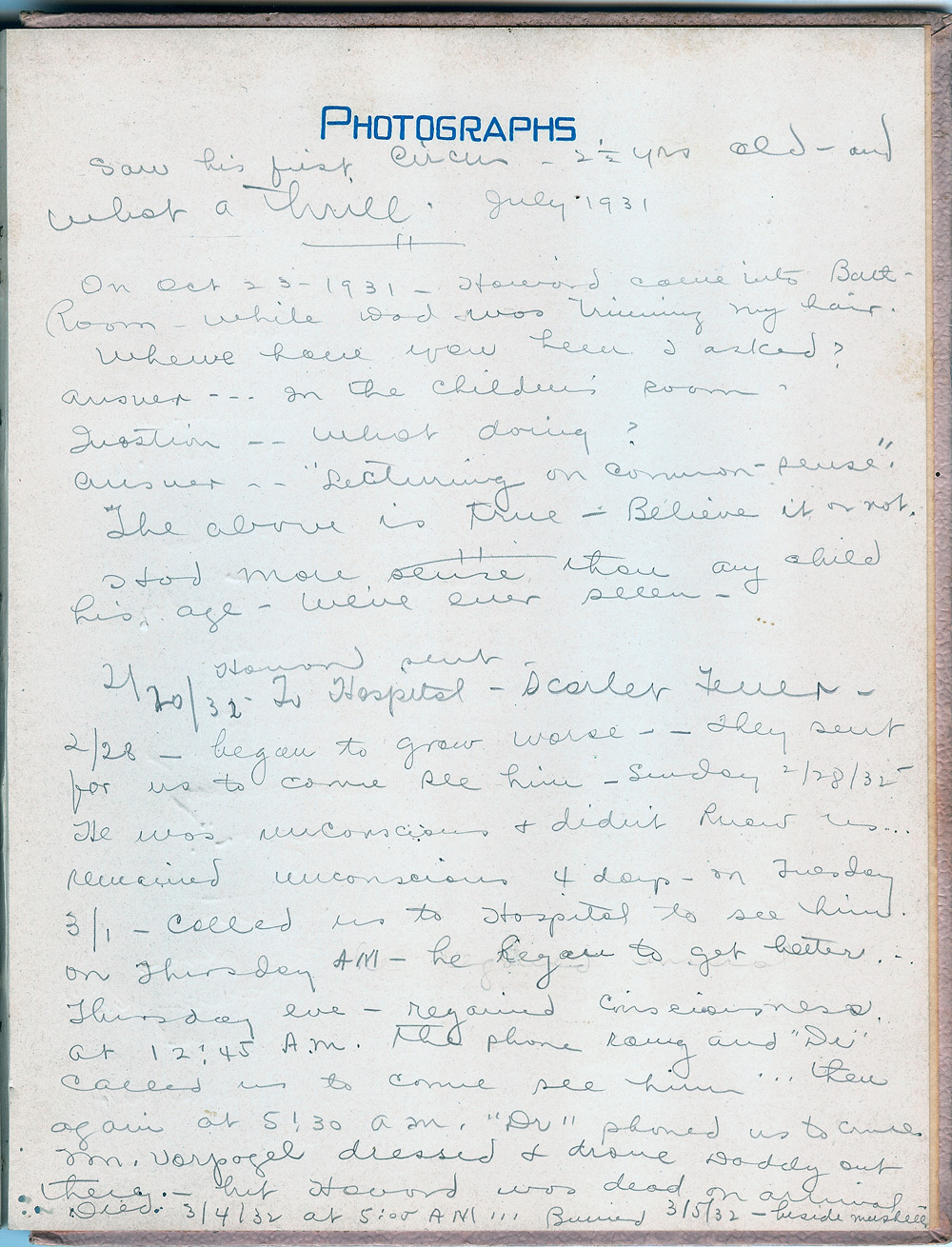
Photographs
Saw his first circus – 2 1/2 years old – and what a thrill. July 1931
On Oct 23 1931 – Howard came into bathroom while Dad was trimming my hair.
Where have you been I asked?
Answer …In the children’s room.
Question—What doing?
Answer – “Lecturing on common-sense.”
The above is true – Believe it or not.
Had more sense then any child his age we’ve ever seen.
***********
2/20/32 Howard sent to hospital – scarlet fever.
2/28 – began to grow worse – they sent for us to come see him –Sunday 2/28/32 – He was unconscious and didn’t know us…remained unconscious 4 days
On Tuesday 3/1 – called us to Hospital to see him.
On Thursday AM he began to get better.
Thursday eve – regained consciousness. At 12:45 AM. The phone rang and Dr. called us to come see him…
Then again at 5:30 a.m. “Dr” phoned us to come. Mr. Vorpogel dressed and drove Daddy out there – but Howard was dead on arrival. Died 3/4/32 at 5:00 AM…
Buried 3/15/32 – beside Mershell.
*****************
He Had Hidden Him Under The Floor

Here is a story my cousin Jacqui told me about her grandfather, Victor Tulane and his rescue of Dr. William Watkins in Montgomery, Alabama. This story was told to her by her mother, Naomi Tulane Vincent. Naomi was twenty and the family was living above the store on Ripley and High Street when it occurred. The Watkins family lived several blocks away on Union Street.
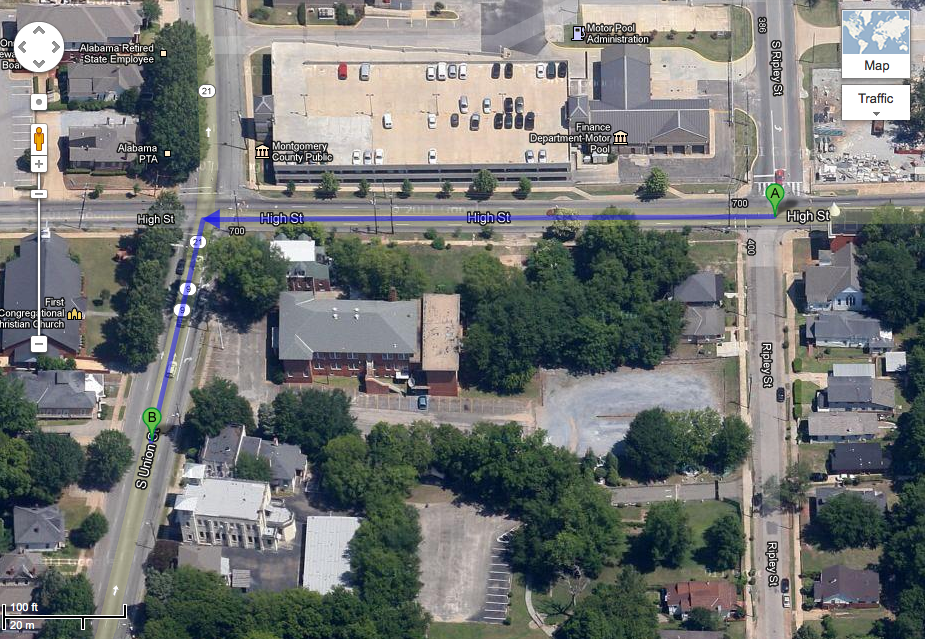
It was the middle of the night when the Tulane family woke up to car lights shining in the windows. They got up and looked out into the yard. It was full of cars and trucks. Victor Tulane told his wife, Willie Lee and daughter, Naomi to go back to bed, everything would be all right.
He let the white men in and they told him they were looking for William F. Watkins, a black dentist who lived several blocks away. Mr. Watkins, they said had insulted one of their wives and they wanted him. Was he there, they asked? Victor told them that nobody was there except his wife and daughter. They could look for themselves. They went through the whole house looking everywhere. Finally, satisfied that Dr. Watkins wasn’t there, they left.
As dawn approached, Victor brought Dr. Watkins out from his hiding place beneath the floor. He put him in the car, piled produce on top of him, drove him to the train station and put him on a train heading north to Chicago.
___________
Jacqui remembers meeting William Watkins in New York when she was a child. He was an old man with a white beard. He looked just like Colonel Saunders, she said, and asked if I could find out anything about him, if he was married, did he have children, when did he die? Using various online sources, I was able to put together the following timeline.
Timeline for William Franklin Watkins
- 1879 – Williams Franklin Watkins Jr. born to William and Sarah (Fauntleroy) Watkins in Montgomery, Alabama.
- 1880 Census – Montgomery, Alabama – William Watkins Sr. was a carpenter. William was 1 year old.
- 1900 Census – Montgomery, Alabama – The family lived at 518 Union Street. William Sr. was a carpenter. There were 6 children at home, including 21 year old William Jr. who was at school. The oldest daughter, Lula was 26, a widow and teaching. She had a 4 year old son.
- 1910 Census – Montgomery, Alabama – Williams Watkins is living at home with his parents and four other siblings.
- 1914 – William Watkins, Sr. Dies
Obituary from the Montgomery Advertiser – March 11, 1914
William Watkins Dead
William Watkins, well known negro (sic) of Montgomery, died at his residence, 518 South Union Street, Tuesday evening at 5 o’clock. He had been living in Montgomery nearly fifty years and was thoroughly identified with negro church, society and business life. He was a contractor and builder and stood well in business circles. He was a member and deacon of the Negro Dexter Avenue Baptist Church and a trustee of Swayne School
- 1917 – William Watkins Jr and Gussie Rue Harris marry in Birmingham, Alabama (Gussie’s home town.)
- 1918 – WWI draft registration card information. William is a dentist in Montgomery, Alabama. Address is the family house on 518 Union St. He is married to Gussie Rue Watkins. His eyes are brown and hair is dark. He’s of medium height and build.
- 1918 – Son William III born in Alabama
- Between the draft card in 1918 and the 1920 census – the event described happened.
- 1920 Census
- *William is a Lodger in Washington DC and practicing dentistry. Identified as Mulatto. He was 40.
- *Wife Gussie living with her parents with their son William in Birmingham, AL.
- *William’s brother Charles is living in Los Angeles, CA. He is a carpenter.
- 1924 – Daughter Alice born in Washington DC.
- 1930 Census – Los Angeles, CA William F. Watkins 51 years old. His wife Gussie and their two children, Williams and Alice, are also in the household. He practices dentistry in his own office.
- 1936 – His mother dies and is buried in Montgomery, AL
- 1954 – William F. Watkins died
I found some of William Watkins extended family on Ancestry.Com and was able to see some photos of the family. The person I contacted said he did look like Col. Saunders. Unfortunately they had never heard this story.
************
For photographs and other posts about the Tulane family click on the links below.
Another Photographic Mystery Solved. Photos of the Tulane family and the store.
Tulane Calls On Members of Race to be Patriotic. Article from 1918
Sepia Saturday – In Which I Hit the Google Jackpot. – More finds about the Tulanes.
Dinner Time
I remember being three years old. My parents and I ate dinner together while my younger sister, Pearl, played in her playpen, wearing her favorite fuzzy blue hat. The dinner table was in the living room/dining room of the parsonage of St. John’s Congregational Church in Springfield, Massachusetts where my father was the minister. I used to hide my food under my chicken wing bones because I was never very hungry. I thought nobody noticed.
When my sister was older, the four of us ate meals together. We moved to Detroit when I was 4 and lived in two other parsonages. The first was on Atkinson we had a small dining room and ate there for all meals. My father’s parents lived down the street and he was often there for dinner leaving my mother, my sister and me eating alone.
The dining room on Atkinson. My mother is standing. You can see the back of my father’s head. His brother Louis is on the left. His brother Hugh is on the right and you can just see his sister Anna’s curl and chin. I guess Henry took the photo because he isn’t in it. I wonder why they are all at our table and where Pearl and I are. I remember those little fat turquoise salt and pepper shakers and the glass sugar and creamer. About 1952.
The next house, which was on Chicago Blvd, was huge and shared with the church. We always ate in the kitchen. My father teased me about being so skinny and told me I needed to eat more before I went down the bathtub drain or stuck in the chair because my bottom was so thin. When I was 8 years old I had my tonsils removed. I told my mother my fork wasn’t heavy any more. I started eating. There was roast beef and sliced tomatoes, chicken pot pies and oatmeal. I only remember eating one meal in the dining room. It was the Thanksgiving dinner right before my parents separated and we moved. My mother started teaching at the same elementary school I attended.
My mother, my sister and I moved to an upper flat on Calvert. What was supposed to be the dining room, was made into the television room and we ate our meals in the breakfast room while watching the pigeons nesting near the roof next door. We named one of them Bridie Murphy. We ate family style with bowls of food on the table that we served ourselves from. There was no free for all. “Please.” and “Thank you.” and “You’re welcome.” were expected and used. My mother cooked but my sister and I set the table and took turns washing the dishes and clearing the rack and table, usually with much whispering about who’s turn it was to do what. We whispered because my mother said she didn’t want to hear any arguing about it. I took cooking in junior high school and learned to make pineapple muffins which I made often. I remember fried chicken, mashed potatoes, jello salad and green beans.
When I was in 7th grade we moved to our own house on Oregon St. The kitchen was too small to eat in and we ate in the dining room which was pretty crowded with a piano, the dining room table and chairs and my mother’s desk (See photo below). My sister and I soon added cooking one meal a week to our dinner chores. I don’t remember what I cooked, aside from biscuits. I remember Pearl cooked a lot of hot dogs and corn bread.
My mother remarried when I was in high school and we all ate dinner together unless Henry was working late. He and my uncle Hugh had a printing shop at that time and often worked through the night. I remember Henry saying how important it was for a family to sit down to dinner together because it might be the only time of the day they spent together. As we got older there were interesting dinner table conversations about politics, what happened that day and more politics. Dinner continued to be a meal shared by all who were home as long as I lived there.
Not dinner, but this is the dining room of the house on Oregon Street about 1962. From left, my mother with the braid, sister Pearl, aunt Gladys, Me, my father.
When I was raising my own 6 children we ate together, although my husband was often working and did not get to eat with us. We continued to have meal time discussions and to serve family style. Now that my children are grown with their own families and dinner tables, my husband and I eat still eat our meals together at the table. Television has never been a part of our mealtimes.
The prompt: Week 32: Dinner Time. On a typical childhood evening, who was around the dinner table? Was the meal served by one person, or was it a free-for-all? What is dinner time like in your family today?
Airports and Answers: Some Thoughts on Lighting by Pearl Cleage
Today, a guest post from my sister, Pearl Cleage, written about our mother. Doris Graham Cleage.
My favorite memory of my mother takes place in one of my least favorite environments: the airport. The Detroit airport at that. I had just flown in from D.C. and the plane was rolling slowly toward the gate, giving me ample time to worry about the next three days.
In the best of times, arrival and departure gates are not great places to play out complex emotional moments. The lighting is terrible and you’re surrounded by strangers. If you’re leaving, it’s too late to start any significant conversation, but not yet time to kiss and say good-by. If you’re arriving, first there is the interminable wait to actually deplane, the impatient jostling of people in the jet way, anxious to get to the concourse so they can jostle their way down to baggage claim, if they were foolish enough to check one.
Once there, those like me being met by friends, lovers or family members try to accomplish the almost impossible task of hugging hello without bumping noses while juggling belongings and trying not to get trampled by the jostlers who are now breathing down your neck as the bags begin to tumble to the carousel and for the merest fraction of a second, you wonder if the trip was even worth it.
And then I saw my mother. She was standing at the agreed upon meeting place, surrounded by a crowd of people, all anxiously scanning the new arrivals just like she was and my first thought was: When did she get so tiny? At just under five foot two, she was dwarfed by the people on either side, even standing between them on tiptoe, searching the sea of strangers for her baby’s face. She looked worried and frazzled and, in the weird way that happens with post-middle aged parents who are seldom seen, suddenly older; more fragile; more vulnerable.
The fragility is what startled me. When had this change occurred? How long had it been since I had actually laid eyes on her? Too long, I knew, but the distance was necessary to insure my emotional survival. I loved my mother, but like most of the women on both sides of the family, including me, she had a mean streak that could manifest itself in harsh judgments about any and everything. That made moments like the one we were now approaching even more fraught with emotional peril since the last thing I needed was a critique of my behavior. I was just emerging from a series of ill-conceived moves both professional and romantic that resulted in a tearful phone conversation during which my mother asked me the worst question in the world: What were you thinking? The next three days were supposed to give me an opportunity to respond.
Please, God, I thought, let this be a good visit. By that I meant one with a relative lack of family drama (possible, but if past is truly prologue, not likely), and maybe, if I was very patient and very lucky, a moment or two where my mother and I could sit together and talk calmly like two grown women about where we were in our lives.
Even as the thought of such a conversation popped into my head fully formed, I knew it wasn’t going to happen. My mother was not a share your deepest secrets kind of woman. She didn’t solicit your opinion because she truly didn’t care what you thought, a trait I admired even while it terrified me. She married brothers, but was so unconcerned about the resulting gossip that I never even knew her behavior was perceived as scandalous until I heard two women discussing it in the seat behind me on the bus all the way home from ballet class at Toni’s School of Dance Arts.
Like the song says, she had paid the cost to be the boss, and while there was in my mother a deep disappointment at some of the ways her life had turned out, she was prepared to live with the consequences of her decisions without complaint. Heart to heart discussions of what she might have done or said differently held no interest. On the contrary, such unsolicited opinions were certain to evoke a look of such amazed indignation and displeasure that all you wanted to do was take back your feeble offering and beg her humble pardon for having had the temerity to make a suggestion about how she lived her life.
But I had a plan. I would ambush my mother with a fresh pot of peppermint tea in a sunny corner of her kitchen. I would put on a record of Leontyne Price singing Puccini, confess my sins and gently begin to pick her brain. I wanted that conversation. No, I needed it. My life was undeniably a mess and I had exhausted my ideas about how to make it better. The moment, I decided, had arrived for my mother to tell me the womanly secrets and ancient female coping mechanisms she’d been withholding until I was ready.
Well, I was ready now. There were so many questions I needed to ask; about her, about me, about whether or not work was worth the risk and love was worth the pain. You know, those questions. The problem was, where to begin? With her journey or mine? My mother was an archeologist trapped in the body of a first grade teacher. She longed to ride camels and see the pyramids of Egypt, but had to settle for the west side of Detroit and a few weeks in Idlewild at the end of the summer, having cocktails lakeside with well manicured doctors wives, all the time dreaming of the shifting white sands of the Sahara.
Could I ask her how it felt to see so much less than you could imagine? Could I ask her why she did it? Could I ask her how she had survived the loss of all those adventures and the stifling of all those dreams? Could I ask her if she thought I could survive it, too? And last but not least, could I ask her if she still loved me even in the midst of all my flopping and floundering and foolishness?
So there it was at last. I had buried the lead, but then my mother spotted me and however long it had taken to stumble upon the real question, her face at that moment was the real answer. There was so much absolute, unconditional, unequivocal, pure, joyous love shining in her eyes as she threw up her hand and hurried toward me that the force of it made me stumble and I almost dropped my bag.
Now I am not a mystical person, but I felt my heart crack and open that day to welcome the gift she was giving me and I understood that there is only one answer to all the questions that were driving me crazy: love/love/love/love/love.
Suddenly the fantasy conversation I’d been hoping for was just that – someone else’s fantasy. My mother and I didn’t need a cozy sunlit corner and a steaming pot of peppermint tea. We had each other. Then we bumped noses and she hugged me so hard she didn’t seem fragile at all anymore, which is, of course, tangible proof that the power of love can strike anywhere, anytime. Even when the lighting is absolutely terrible.
Another post about my mother you may find interesting- GrowingUp – In Her Own Words,

